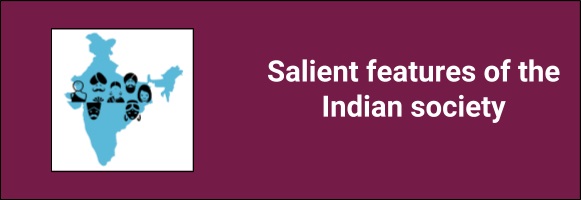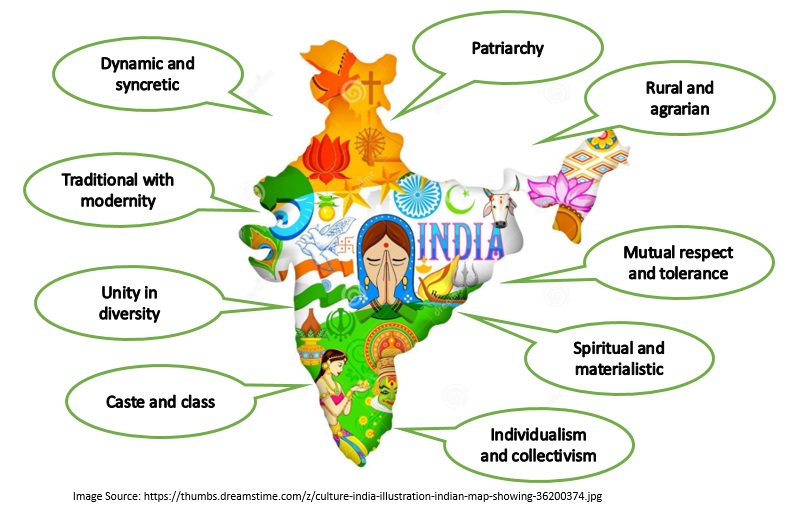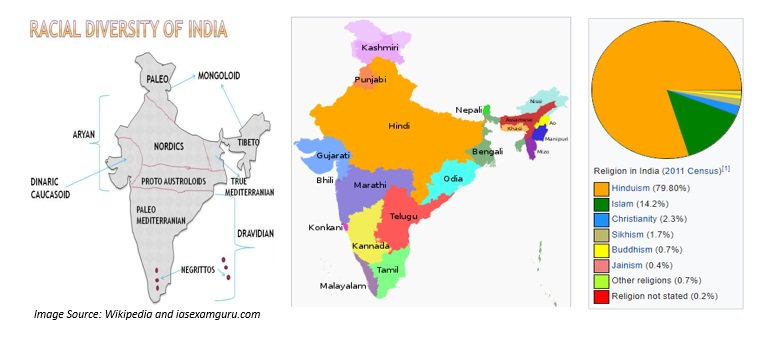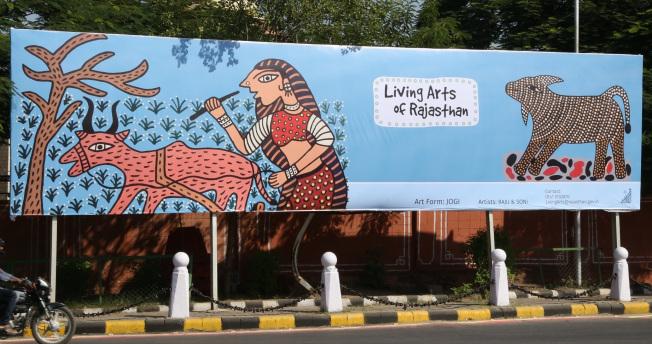(HOT) UPSC Current Affairs 2025 PDF
NEW! The Gist (NOV-2025) | E-BOOKS
Salient features of the Indian society

Salient features of the Indian society
What is a society?
A society is an aggregation (sum) of all the human relations based on some common characteristics, tradition, norms and values. A society can be called homogeneous (e.g. Arab nation, Japan) or heterogeneous (e.g. India, US) based on the elements of diversity. Practically no well-developed society across the world can be called homogeneous as some form of difference do exist in all of them.
What is Indian society?
The question becomes difficult to answer as by the reason of Indian diversity. People of India do not have a common religion, race, language etc. The only thing that people in India share together is the identity of being Indian and the values prescribed under the constitution. However following feature can help define Indian society in broad terms.

Feature of Indian society:
Dynamic and Syncretic:
The present Indian society is the culmination of long drawn process involving both assimilation and accommodation. While many tribes have over the years lost their indigenous culture as a result of assimilation into the Hindu society, many new practices have emerged from contact of different cultures. It is also dynamic since it is ever changing. The recent example of it is the changes in the social values after globalization.
Example of assimilation:
-
About 197 languages/dialects are endangered in India (1)
-
Struggle of many tribes such as Naga for protecting their culture from outsiders
-
Increasing number of PVTG (Particularly Vulnerable Tribal Groups)
Buy Printed Complete Study Materials for UPSC IAS PRELIMS Exam
Online Crash Course for UPSC PRE Exam
Examples of syncretism:
-
Language of Urdu has developed out of Arabic and Hindavi
-
Bhakti movement and Sufi movements that inspired each other
-
Caste like system adopted by Islam in India (foreign conquerors - Ashraf and the local converts - Ajlaf)
-
Rashtrapati Bhawan – fusion of Rajput, Mughal and European architecture
Traditionalism with modernity:
While after globalization a visible shift can be seen towards modern values such, Indian society has not failed to protect and preserve its traditional values and norms and has even endeavored to spread them across the world.
Examples:
-
While many modern gyms have opened across the nation, yoga has only gained more popularity in the recent time as evident from the declaration of 21st June International Yoga Day by UN
-
Western food is equally popular as Indian food. So is the case with dance, music, cuisines, dress etc.
-
While western medicines have gained ground in India, Indian system of medicine (AYUSH) has not lost its charm
-
While nuclear families have become the new norm, family values like taking care of elderly have remained intact
-
Spirituality and religiosity continue to be an important part of peoples’ lives despite growing materialism
Unity in Diversity:
When India got independent many political thinker had commented that number of days of Indian democracy are numbered since society as diverse as India will ultimately have to make way for small homogeneous independent states. There are:
-
About 6 major religions
-
More than 1500 spoken languages(2)
-
5 major racial groups
-
Number of sects within the religion
Factors that have helped in the unity:
-
Values of co-existence that had developed as a result of historical fusion and accommodation since most of the conquerors like Mughals settled in India itself
-
The Indian national movement: rule of congress such as meeting shall be held in different part of nations; British railways, telegram, army, Indian press, major movements like non-cooperation that promoted mixing of people. This all led to development of Indian identity.
-
Values espoused in the constitution which have protected the growth of majoritarianism in the nation
-
State reorganization based on language and efforts of government to protect the interest of minorities
Examples:
-
High levels of migration across the nation despite the wise cultural differences
-
Ugadi festival of Andhra – Muslims here offer prayers to the Vaishnav deity (3)
-
Major festivals like Diwali, Eid and Christmas are celebrated across the nation with equal fervor
-
Flourishing metro cities like Delhi, Bangalore etc. with cosmopolitan culture

Caste and Class:
The Indian society mostly Hindus (80%) divided under the rigid caste system based on the ascriptive values, a system which has permeated even in other religions like Islam as well. The system originated from the varna systems has created social stratification a major source of privileges and disabilities. At the same time economic reforms have created flourishing urban areas (31% population) where people are stratified based on class (achievements such as income) rather than their social identity.
The emerging class system though closely resembles the caste hierarchy, has actually provided downtrodden section opportunities for upward social mobility. Co-existence of inter-caste marriages and endogamy is a common example of such a feature.
Other features of castes system:
-
Perpetuated through endogamy
-
Reflects in the economic structures as well (in the indicators of poverty, education, income, asset ownership, trades and professions etc.)
-
It place the collective values over and above the individual achievements
Recent incidents like Bhima-Koregaon violence, Jat and Patidar agitation for reservation are examples of assertion of caste identities which many believe has been waning the Indian society in the past few decades.
Patriarchy:
Patriarchy is family or social system where final decision making power vests in the male head. As a result of it women usually are relegate to the status of second class citizens are subjected to various disabilities. Although many social groups are matrilineal as well such as in Meghalaya and Kerala, patriarchy is near universal. The system can be found in nearly every society. It leads to gender discrimination and socio-eco deprivation of women. The system reflects in the following:
-
Lower sex ratio and female foeticide
-
Malnutrition (nearly 50% women in India are anemic as per NFHS), high MMR
-
Low levels of literacy among women and low female labor force participation
-
System of dowry and lesser freedom for marriage (Hadiya case)
Rural and Agrarian:
About 70% of the population in India resides in the rural areas and almost half the population is engages in agriculture as a major source of livelihood. It is usually said that heart of India lies in its villages proved by the statistics as well as the culture of rural areas. Many of the art and craft such as Madhubani paintings, Khadi, bamboo items and other handicrafts are still predominantly sourced from rural areas. For instance, public places in Jaipur are being painted with the folk paintings of Rajasthan.
Also, major festivals in India such as Holi, Sakrat, Lohri, Pongal etc. are related to harvest seasons thereby indicating the agrarian connection of Indian celebrations.

Mutual respect and Tolerance:
Indian society has survived despite its diversity because of the accommodative values of mutual respect and tolerance that have existed here from the very early times. These values were only strengthened with time as more and more invaders made India their home leading to mixing and co-existence on many different cultures.
During the ancient period Indus valley civilization used to be a secular society and traded peacefully with other societies such as Mesopotamia, importing their cultural elements as well. Buddhism and Jainism promoted these values among their followers. Some ancient texts also promoted the value of “sarva-dharma-sam-bhava" which represents the secular values of the time. Co-existence of many philosophies – religious, atheistic and materialist - indicates the environment of debate and divergence that must have existed at the time.
In the medieval period, mixing due to frequent invasions and increased trade led to fusion of different cultures. The fusion of Nagara and Dravid styles into Vesara style, of Hindavi and Arabic into Urdu, Bhakti and Sufi movements (Teachings of Kabir, Guru Nanak, Khwaja Chishti etc.), Dīn-i Ilāhī of Akbar indicate the mutual respect of the society in general for different cultures.
In the modern time these values have helped create and sustain a diverse secular democratic republic. It is these values which have curbed the rise of extremism in India so far and prevented poaching of Indian Muslims by terror groups such as ISIS. High levels of migration and rise of cosmopolitans such as Delhi and Bangalore has been possible only because of these values.
MODEL QUESTIONS
Previous year mains questions
Ques-1. The spirit tolerance and love is not only an interesting feature of Indian society from very early times, but it is also playing an important part at the present. Elaborate. (2017)
Ques-2. Why are the tribals in India referred to as the Scheduled Tribes? Indicate the major provisions enshrined in the Constitution of India for their upliftment. (2016)
Ques-3. Describe any four cultural elements of diversity in India and rate their relative significance in building a national identity. (2015)
Ques-4. Debate the issue of whether and how contemporary movements for assertion of Dalit identity work towards annihilation of caste. (2015)
Buy Printed Complete Study Materials for UPSC IAS PRELIMS Exam
Online Crash Course for UPSC PRE Exam
© IAS EXAM PORTAL

